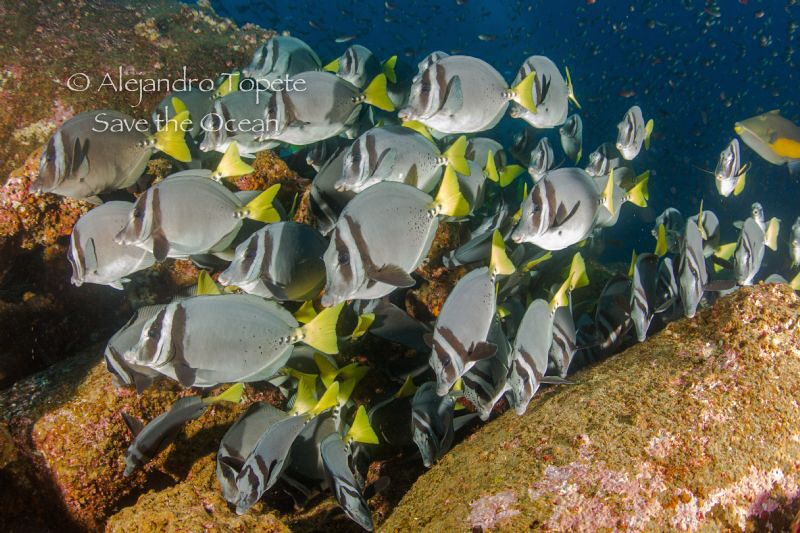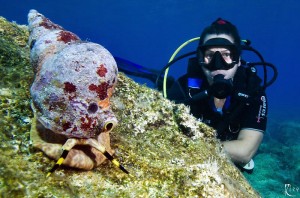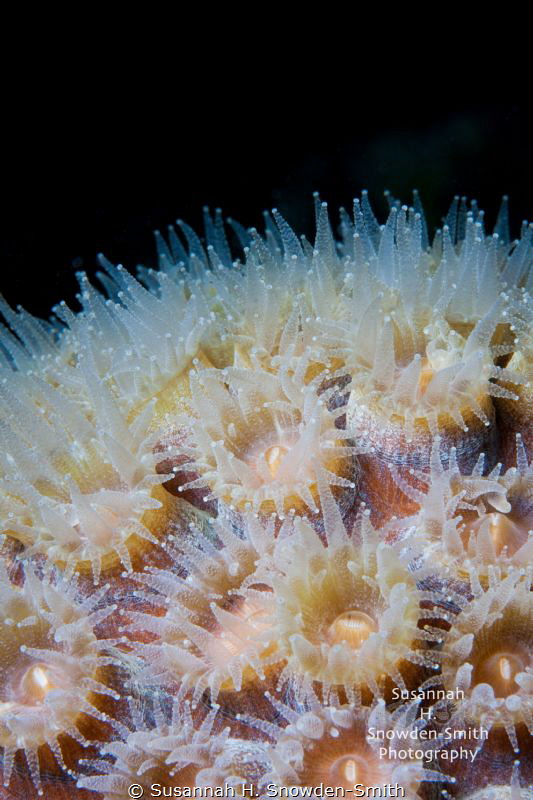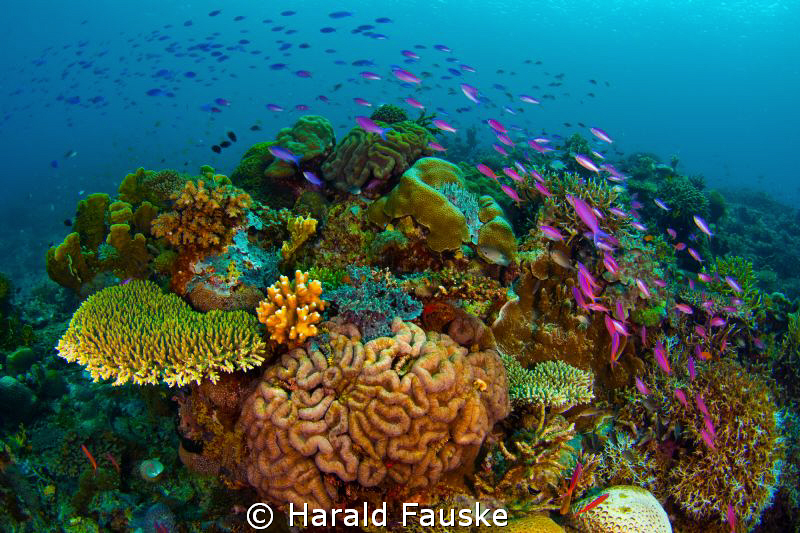What Fish Eat (and Why it Matters)
Ask anyone about the circle of life, and they’ll probably know it relates to food- as in, who eats who. Essentially, they would be right. However, this vague understanding of how life on earth sustains itself is easily forgettable when we come face to face with the real thing.
Submerge at a thriving, colorful coral reef, and the extent of your ecological awareness will probably be, “This is beautiful! I love it!” Unfortunately, pristine reefs are few and far between these days. And the unfortunate many who have dived at a damaged reef are more than likely to ascend with a blooming sense of depression, asking themselves, “What went wrong?”
Some of us have already picked up the usual banter. We cite climate change (causing coral bleaching), dynamite fishing, and overfishing. While all this may be true, it doesn’t further our understanding of a coral reef ecosystem’s intricate web of species relationships. It’s this web, this circle of life, which is affected by global environmental change. To understand how bleaching and overfishing (and the many other threats we don’t usually consider) actually wreak their havoc, here’s an introduction to the function of a few key players in the coral reef ballgame, and most importantly, what they eat.
* All photos in this article are contest entries at UnderwaterPhotography.com, the longest-running online UW photography competition! If you like an image, click on it and vote for it on the contest!
Algae-grazers: Rabbitfish, Surgeonfish, and sometimes Parrotfish


Mowing the lawn
While they may not be as dramatic as sharks on the prowl, smaller, algae-eating fish have one of the most important roles on the reef: giving corals space and sun. If no Rabbitfish or Surgeonfish were present to chomp on fast-growing marine algae, these plants would quickly carpet every inch of bare rock, and shoot up to cast towering shadows over the reef. The slow-growing coral, without space to settle or sunlight to use for energy, would then decline.
If you’ve ever dived on a reef blooming with algae, local overfishing of algae-grazers may be the cause. These fish rarely get exported to foreign supermarkets, but they’re a significant part of the diet for millions of coastal people in the tropics. The solution? More protected areas to restock the fish population would be a good start. Slower human population growth would also help.
Many sea urchin species eat algae, and Caribbean divers might be familiar with the effects of a massive urchin die-off in 1983. When a disease riddled Caribbean urchin populations, coral cover was threatened in many areas by unchecked algal growth.
Crown-of-Thorns predators: Triton’s Trumpet Shell

Defending the garden
One of the worst diving experiences is to return to a beloved reef and find that corals which were once pink, brown, and yellow have become… white. Or green, covered in algae. It may be that the reef was beset by an outbreak of Crown-of-Thorns Starfish, a many-armed, thorny-skinned, 50 centimeter-wide sea star which loves to eat coral. A Crown-of-Thorns Starfish (COTS) can devour huge amounts of coral tissue incredibly quickly, extruding its ravenous stomach into the cracks and branches of coral colonies. While COTS are natural reef predators, since the 1970s it has become common for hundreds of COTS to attack a reef at once- a previously unnatural occurrence.

Scientists still debate the multiple causes of COTS outbreaks, but one fact is certain: their main nemesis has been fished out. This is the Triton’s Trumpet Shell, a gigantic snail which is uniquely impervious to the COTS’ venomous spines. Triton’s Trumpet Shells look great on the mantelpiece, so they have long been targeted for tourist trade. Unfortunately, without these mighty shells to take on the COTS, humans are the last hope for COTS-threatened reefs; only with local extraction programs can crisis can be averted.
Apex predators: Sharks

Keeping reefs awesome
Hardly anyone knows that top predators like sharks actually increase the amount and diversity of fish on reefs! Of course, sharks are skilled killers, and they need a good supply of prey for their meals. However, by hunting for weaklings, they actually keep other fish populations healthy, and prevent population booms and collapses which destabilize the whole ecosystem. The abundance and diversity of coral reefs evolved over thousands of years with sharks as top predators, so removing them creates a chain of imbalances all down the food web.
Unfortunately, sharks are being massacred worldwide to satiate the delicacy trade for shark fins in Asia and beyond. Without protection, sharks may be a thing of the past.
Energy-eaters: Coral

Living off donations
Coral reefs and their associated marine life (25% of all marine species are found in the 1% of ocean with coral reefs) would never have evolved without a special partner: zooxanthellae. These microscopic algae live within the tissue of most hard corals, and they conduct photosynthesis, using the sunlight that permeates clear tropical seas to create molecules of energy. They kindly offer a good helping of these molecules (glucose) to their host coral colony, which gobbles it down; up to 80% of a coral’s energy may come from zooxanthellae. In this way, coral gets to ‘eat’ most of its food without going to the trouble of catching it.
With such a dependent relationship, corals are extremely vulnerable to anything that threatens zooxanthellae. Bleaching, of course, tops the list. As the ocean temperature rises with climate change, many corals expel their zooxanthellae. This unlucky occurrence leaves the coral tissue alive for a while, but with extremely reduced energy input; coral death often follows. As of early 2016, the Great Barrier Reef has been experiencing a massive bleaching event from which it will probably never fully recover.
Even without the threat of bleaching, coral’s dependence on zooxanthellae is equally vulnerable to the reduction of sunlight. That may be an unlikely scenario on Earth as a whole, but it often occurs in coastal, tropical waters. Consider that many coral reefs are in countries which should be covered in rainforest, but are now deforested. The death of trees and their roots has created muddy landscapes which let rain and rivers dump buckets of sediment into the ocean. Brown water, through which sunlight can’t penetrate, also means coral starvation.

Life on Earth evolved through the intricacies of feeding relationships, and hardly anywhere are those relationships as specialized and diverse as on coral reefs. When coral may be about to vanish from Earth, they deserve a bit more than a vague understanding of why they’re disappearing. Reef-lovers should also know that the variety of threats and disruptions includes some that are locally fixable. Community-based COTS removal, reforestation programs, marine protected areas, and limits on certain fish catch items can all help. The next time you’re diving, try to find out what’s really happening in the ecosystem, and see if you can support a local initiative that supports the reefs you love.
Let us know how you feel about overfishing, shark finning and coral bleaching in the comment below!
- Strange Sharks – February 1, 2018
- Getting to know Jaws: the truth about great white sharks – October 20, 2017
- Reef Sharks: Coral’s Best Friend – September 26, 2017

 CAD
CAD